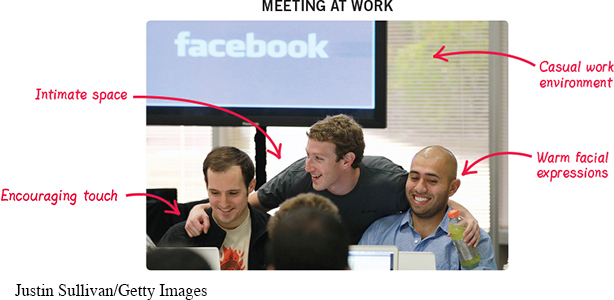Appearance
The way you look speaks volumes about who you are because people use your physical appearance—visible attributes such as hair, clothing, body type, and other features—
Clothing plays a large role in your physical appearance. People draw conclusions about your profession, level of education, socioeconomic status, and even personality and values based solely on what you’re wearing (Burgoon, Buller, & Woodall, 1996). So before leaving the house, ask yourself whether your outfit is appropriate for your plans and whether your clothing will convey the image you want it to convey. If you want a job interviewer to see you as socially skilled and highly motivated, wear something business appropriate to the interview (Gifford, Ng, & Wilkinson, 1985). Your clothing choices include artifacts—objects you possess to communicate your identity to others, such as watches, jewelry, and handbags. Artifacts can communicate your affluence, influence, and attractiveness (Burgoon et al., 1996). American men, for instance, typically don’t wear much jewelry, so a man who wants to stand out may sport a large expensive watch to convey power and wealth.
151
NONVERBAL COMMUNICATION IN CONTEXT
Whether it’s through body language, facial expressions, or environmental features, all forms of nonverbal communication influence your perception of a situation. What do the nonverbal cues in the photos tell you about each workplace?

